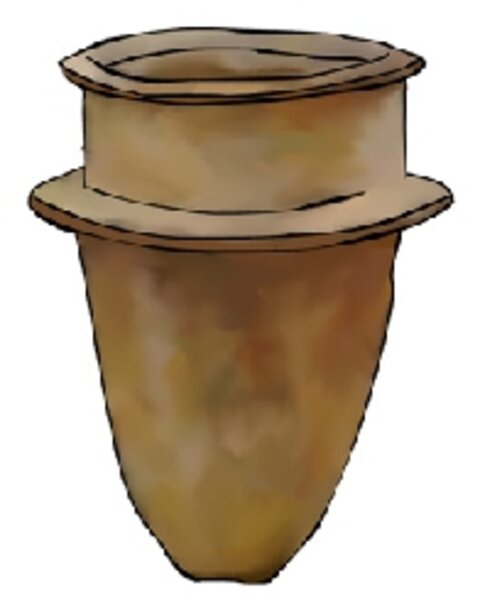China hosts world's oldest pottery; no faux fu cauldron here
Loading...
Move over Mings (of Ming vase fame). Scientists have uncovered Chinese pottery from the Wei Bak Wen dynasty.
Well, not dynasty, really, but from folks who inhabited a cave in southern China between 18,300 and 17,500 years ago. That's 1,000 years older than the oldest pots found in Japan. So for now, China can boast of being host to the earliest point of origin for pottery-making around the globe (sorry, Japan).
That's the take from a team of archaeologists from China, Israel, the US, and Britain. They've been working in a cave in the southern Yangtze river basin trying to get a better handle on the cave's inhabitants at the end of the last glacial maximum -- the period when mile-thick glaciers reached their maximum spread over the continents of the northern hemisphere. That was between 23,000 and 18,000 years ago.
Their work appears in the current issue of the Proceedings of the National Academy of Sciences. You can download a full copy of their formal report here.
Scientists found pottery fragments in the cave during digs in 1993 and 1995. The pieces came in two clusters. One cluster had enough fragments to allow the scientists to piece most of one pot back together. It was about 12 inches wide at the rim and stood about 11 inches tall. But it had a pointed base, putting it into a class of pots known as fu cauldrons.
But researchers had problems trying to figure out how old the pots were. Soil layers are jumbled, so it's hard to put samples in relative chronological order as they are excavated. So researchers look for bones, seeds, charcoal, or other organic material from the same soil layer hiding the pottery. Then they use radiocarbon dating to estimate an age. But soil chemistry has been unkind to much of the organic material that could be tied to human occupation of the site.
Based on a dig in 2004, which turned up another fragment, researchers were able to find materials they could date from the right soil layer. Voila, better dates. These Chinese pot pieces are 1,000 years older than the oldest pottery yet found on the Japanese islands.
Other scientists had speculated that pottery originated in east Asia between 16,000 and 17,000 years ago. Ancient pots have been found in what is now Japan, China, and Russia's Far East. Looks like they were right.
Who were the folks who hunkered down in Yuchanyan Cave and made pots? The researchers say they were hunter-gatherers who lived in a climate some 7 to 9 degrees Fahrenheit cooler than today's. The region would have been far drier. The pots had walls averaging about three-fourths of an inch thick and had been fired at temperatures of between 700 and 900 degrees F.





